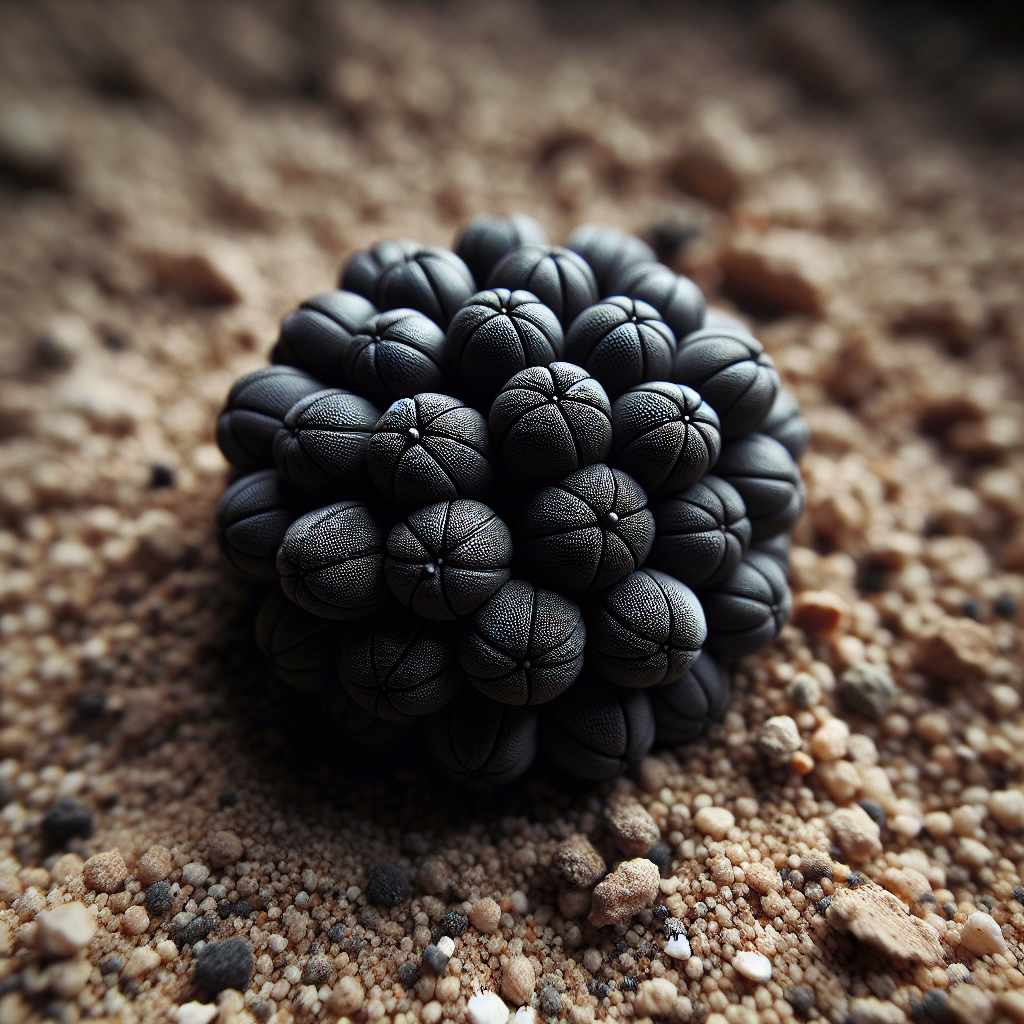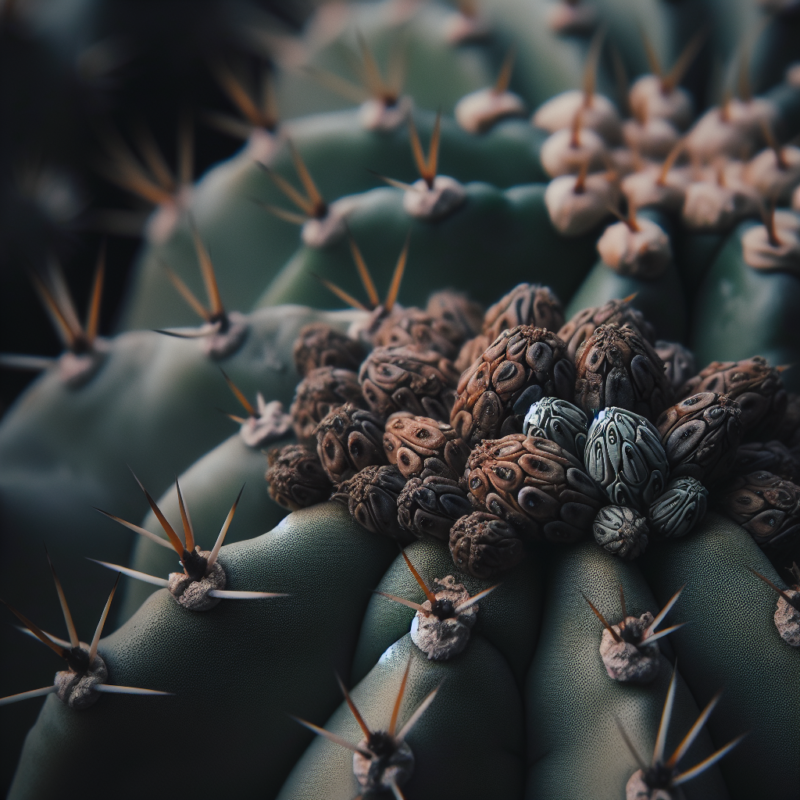Uncategorised
peyote cactus seeds
The History and Cultural Significance of Peyote Cactus Seeds
Peyote cactus seeds have a long and rich history, deeply intertwined with the cultural practices of indigenous communities in North America. These small, brown seeds are harvested from the peyote cactus, also known as Lophophora williamsii, which is native to the Chihuahuan Desert in Mexico and parts of southern Texas. The seeds have been used for centuries in traditional medicine and spiritual ceremonies, making them an integral part of the cultural heritage of many Native American tribes.
The use of peyote cactus seeds can be traced back to pre-Columbian times, with evidence of their consumption found in archaeological sites dating back over 5,000 years. The Huichol people of Mexico, who are known for their intricate beadwork and vibrant yarn paintings, have a long-standing tradition of using peyote seeds in their spiritual practices. They believe that the seeds contain powerful healing properties and are a gateway to the spiritual realm.
In addition to the Huichol, many other Native American tribes, such as the Navajo, Comanche, and Kiowa, also have a deep connection to peyote cactus seeds. For these communities, the seeds are considered sacred and are used in religious ceremonies and rituals. The Native American Church, which was founded in the late 19th century, also incorporates the use of peyote seeds in their religious practices. They believe that the seeds have the power to connect individuals with the divine and promote spiritual growth.
The cultural significance of peyote cactus seeds goes beyond their use in spiritual ceremonies. They are also an important part of traditional medicine for many indigenous communities. The seeds are believed to have medicinal properties and are used to treat a variety of ailments, including fever, pain, and digestive issues. The Tarahumara people of Mexico, who are renowned for their long-distance running abilities, have been known to consume peyote seeds to increase stamina and endurance.
Despite the long-standing cultural and medicinal use of peyote cactus seeds, their popularity and availability have faced challenges in recent years. The peyote cactus is a slow-growing plant, taking up to 15 years to reach maturity and produce seeds. This, coupled with the increasing demand for seeds, has led to overharvesting and depletion of the plant in its natural habitat. As a result, the peyote cactus is now a protected species in Mexico and the United States, and the harvesting and consumption of its seeds are strictly regulated.
In addition to conservation efforts, there have also been legal battles surrounding the use of peyote cactus seeds. In the early 20th century, the US government attempted to ban the use of peyote in Native American religious ceremonies, citing its hallucinogenic properties. However, in 1994, the American Indian Religious Freedom Act was passed, protecting the use of peyote in traditional religious practices.
Today, peyote cactus seeds continue to hold significant cultural and spiritual importance for many indigenous communities. The seeds are still used in traditional ceremonies and are seen as a symbol of cultural identity and resilience. However, with the increasing threats to the peyote cactus and the legal challenges surrounding its use, it is crucial to find a balance between preserving this sacred plant and respecting the cultural practices of indigenous communities.
In conclusion, peyote cactus seeds have a long and complex history, deeply rooted in the cultural practices of Native American tribes. They are not just a plant or a seed, but a symbol of spirituality, healing, and cultural identity. As we continue to learn more about the importance of preserving our natural resources and respecting diverse cultural traditions, it is essential to recognize and honor the significance of peyote cactus seeds in the history and heritage of indigenous communities.
Growing and Harvesting Peyote Cactus Seeds: Tips and Techniques

Peyote cactus, also known as Lophophora williamsii, is a small, spineless cactus native to the southwestern United States and northern Mexico. It has been used for centuries by indigenous peoples for its psychoactive properties and is now gaining popularity in the modern world for its medicinal and spiritual benefits. One of the most fascinating aspects of this cactus is its seeds, which play a crucial role in the plant’s reproduction and growth. In this article, we will explore the process of growing and harvesting peyote cactus seeds, including tips and techniques for a successful harvest.
First and foremost, it is important to understand the life cycle of the peyote cactus to effectively grow and harvest its seeds. The plant typically takes 3-5 years to reach maturity and produce flowers, which then develop into fruits containing the seeds. The seeds are small, round, and black, with a hard outer shell. They are usually found inside the fruit, which resembles a small, green apple. It is essential to wait until the fruit is fully ripe before harvesting the seeds, as this ensures that they are mature and viable for planting.
When it comes to growing peyote cactus from seeds, there are a few key factors to consider. The first is the soil. Peyote cactus seeds require well-draining soil with a slightly acidic pH level. A mixture of sand, perlite, and peat moss is ideal for providing the right balance of moisture and nutrients for the seeds to germinate. It is also important to keep the soil moist but not waterlogged, as this can cause the seeds to rot.
Another crucial factor is temperature. Peyote cactus seeds need warm temperatures to germinate, ideally between 70-80 degrees Fahrenheit. This can be achieved by placing the seeds in a warm, sunny location or using a heat mat. It is also important to provide adequate air circulation to prevent mold and fungus growth, which can be detrimental to the seeds.
Once the seeds have been planted in the appropriate soil and temperature conditions, it is a waiting game. Peyote cactus seeds can take anywhere from 2 weeks to 2 months to germinate, so patience is key. During this time, it is important to continue to monitor the soil moisture and temperature to ensure optimal growing conditions.
As the seeds begin to sprout and grow into seedlings, it is important to provide them with adequate light. Peyote cactus seeds require full sun to thrive, so placing them in a sunny window or using grow lights is essential. It is also important to gradually acclimate the seedlings to direct sunlight, as they can easily get sunburned if exposed too quickly.
Once the seedlings have grown to a size of about 1 inch in diameter, they can be transplanted into individual pots. This allows for better control of soil moisture and nutrients, as well as preventing overcrowding. It is important to continue to provide the seedlings with full sun and regular watering, but be careful not to overwater as this can cause root rot.
After about a year of growth, the peyote cactus seedlings will reach a size of about 2-3 inches in diameter and can be considered mature enough to harvest. To harvest the seeds, gently twist and pull the fruit from the plant, being careful not to damage the roots. The fruit can then be cut open to reveal the seeds, which can be collected and stored for future planting.
In conclusion, growing and harvesting peyote cactus seeds requires patience, attention to detail, and the right growing conditions. By understanding the life cycle of the plant and providing the necessary elements for growth, you can successfully grow your peyote cactus from seeds. Whether for medicinal or spiritual purposes, the journey of growing and harvesting these seeds can be a rewarding and enlightening experience.
Exploring the Medicinal and Spiritual Uses of Peyote Cactus Seeds
Peyote cactus seeds have been used for centuries by indigenous cultures in North America for their medicinal and spiritual properties. These small, round seeds are found inside the peyote cactus, a small, spineless cactus that grows in the Chihuahuan Desert of Mexico and the southwestern United States. While the peyote cactus itself has been the subject of much controversy and debate, its seeds have been praised for their healing and transformative effects.
Medicinally, peyote cactus seeds have been used to treat a variety of ailments, including fever, pain, and inflammation. The seeds contain a high concentration of alkaloids, specifically mescaline, which is known for its psychoactive properties. Mescaline has been used in traditional medicine to alleviate pain and reduce fever, and it is also believed to have anti-inflammatory effects. Some studies have shown that mescaline may be more effective than traditional painkillers in treating chronic pain.
In addition to its physical healing properties, peyote cactus seeds are also used for their spiritual benefits. The seeds are considered sacred by many indigenous cultures and are often used in religious ceremonies and rituals. The Huichol people of Mexico, for example, use peyote cactus seeds in their spiritual practices to connect with the divine and gain insight and wisdom. They believe that the seeds contain the spirit of the peyote cactus and that consuming them allows them to communicate with the plant and receive its healing and spiritual guidance.
The spiritual use of peyote cactus seeds has also gained popularity in Western cultures, particularly in the New Age and psychedelic communities. Many people believe that consuming the seeds can lead to a heightened state of consciousness and a deeper understanding of oneself and the universe. Some even claim that peyote cactus seeds have the power to induce mystical experiences and spiritual awakenings.
However, it is important to note that the use of peyote cactus seeds for spiritual purposes is not without controversy. The peyote cactus is a protected species in many areas, and its use is strictly regulated. In the United States, for example, the Native American Church is the only group legally allowed to use peyote in their religious ceremonies. This is due to the potential for abuse and the risk of overharvesting, which could lead to the extinction of the plant.
Despite these concerns, the use of peyote cactus seeds continues to be a significant part of many indigenous cultures and spiritual practices. The seeds are often consumed in a ceremonial setting, with a shaman or spiritual leader guiding the experience. They are typically ground into a powder and mixed with water or other liquids to create a bitter-tasting tea. The effects of consuming peyote cactus seeds can last for several hours, and users may experience altered perceptions, intense emotions, and a sense of connection to the natural world.
In recent years, there has been a growing interest in the potential therapeutic benefits of peyote cactus seeds. Some studies have shown that mescaline, the primary alkaloid in the seeds, may have antidepressant and anti-anxiety effects. It has also been used in the treatment of alcoholism and other addictions, with some success. However, more research is needed to fully understand the potential medical uses of peyote cactus seeds.
In conclusion, peyote cactus seeds have a long history of use in traditional medicine and spiritual practices. While their medicinal and spiritual benefits are widely recognized, their use is also surrounded by controversy and regulation. As interest in alternative and plant-based medicine continues to grow, it is important to respect the cultural significance and environmental impact of peyote cactus seeds. Whether used for healing or spiritual purposes, these small seeds hold a powerful and sacred place in many cultures and should be treated with reverence and caution.

